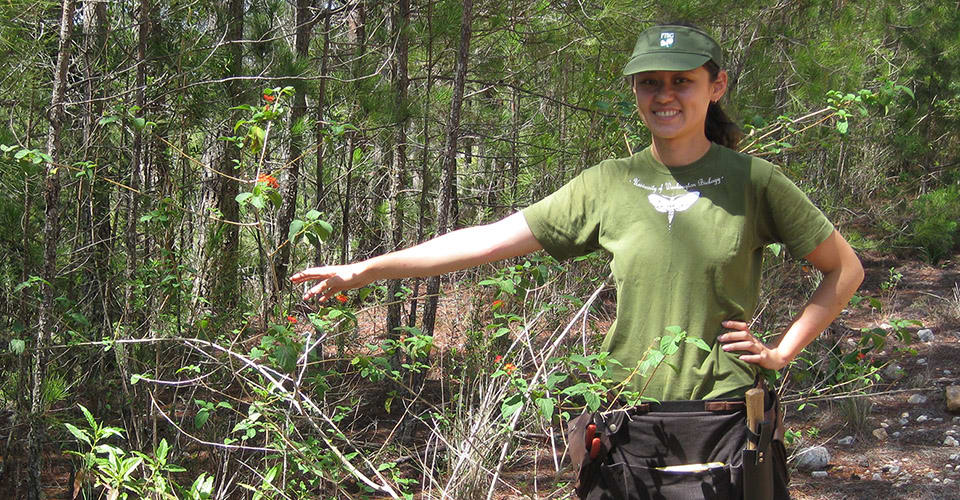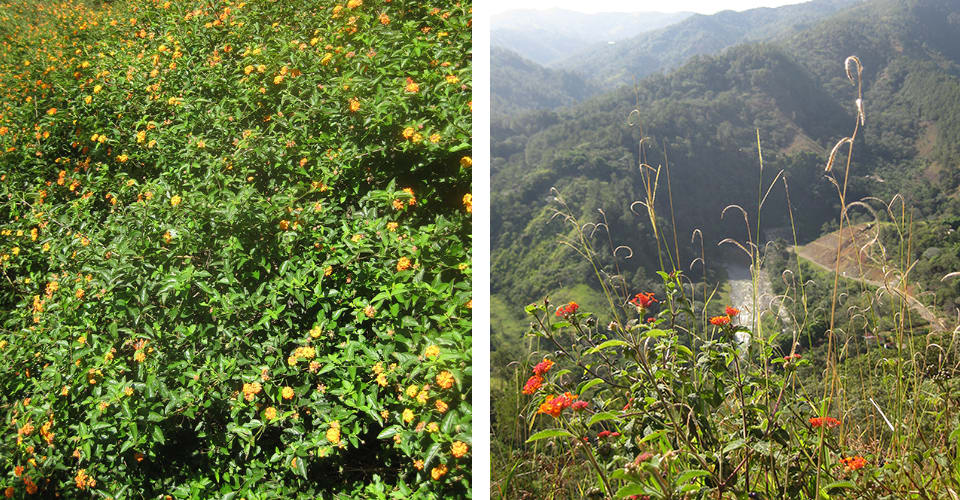We are biologists studying invasive plants at the University of Arizona’s Department of Ecology and Evolutionary Biology. In our research, we aim to find out more about why and how introduced species become invasive.
We aim to discover the origins of invasive Lantana camara, which is among the world’s worst weeds. To come up with effective weed control strategies, we need to know more about where the weeds have come from. Understanding the genetic heritage and geographic origin of the invasive plants will allow us to source their natural enemies (such as plant-eating insects) to use as targeted weed control agents. In this project, we will use DNA evidence to reveal the identities and locations of the wild plants from which invasive Lantana is descended. This will be an important contribution toward keeping one of the world’s worst weeds in check.

Lantana camara is a popular ornamental shrub. Widely cultivated for its colorful flowers, Lantana has escaped cultivation and invaded natural ecosystems around the world. In fact, it’s one of the world’s worst invasive species, according to the IUCN Invasive Species Specialist Group. Invasive species cause billions of dollars of environmental damage per year, and significant effort is invested worldwide in controlling invasive weeds.
Controlling Lantana is difficult, because the rapid growth and spread of the weeds makes mechanical and chemical control methods inefficient and costly. To effectively control Lantana, more efficient methods are needed, such as biological control. This is a targeted approach which relies on sourcing natural enemies from an invasive species’ native range to control the invaders. Because targeted control methods like this rely on a precise match between the control agent and the target species, they require a good understanding of invasive species’ origins.

Invasive Lantana has spread through parts of the USA, Australia, South Africa, and Asia, but it is not known where the invaders originated, or even if multiple Lantana species have contributed to the invasive complex. The native distribution of the Lantana camara species group stretches from Mexico to Argentina, and it might be any group of plants in this range which shares direct ancestry with the invasive weeds. Revealing the native ancestral species and geographic origins of invasive Lantana will enable effective targeted control strategies to be developed.
We will use a population genomic approach to reveal the evolutionary and geographic origins of weedy Lantana, specifically asking: 1) Which wild species represent(s) the ancestor(s) of invasive Lantana? 2) Where does invasive Lantana come from?
We've sampled DNA from over 100 plants representing various populations of native and invasive Lantana from around the world. Funds raised will pay for these samples to be processed so that we can sequence genomic markers which will uniquely fingerprint each population. We will compare these markers to trace a pedigree between all the invasive and native populations we've sampled, which will reveal the native population(s) that are most closely related to the invasive weeds. This will show us which species and geographic regions represent the origins of invasive Lantana.
You can contribute to our investigation into the origins of invasive Lantana by helping us to purchase the supplies and reagents we need to prepare our DNA samples for sequencing. These include the buffers, enzymes, and DNA barcodes needed to purify, cut out, and tag the genomic markers which we will sequence. By making a donation or sharing our project, you can help make this research happen. Thank you for your participation!
Your donation will process one Lantana DNA sample for sequencing: one more piece toward solving the puzzle of the invaders' origins! We will keep you posted on the project's progress and findings with regular updates.
With your donation, we can process two Lantana samples for sequencing: a sample from a weedy plant, together with a sample from a wild native plant. Comparing genomic fingerprints between two samples might reveal a match, which would be a big clue in finding the origins of the invaders! We will send you regular project updates to fill you in on our progress and findings.
We can process five samples thanks to your donation! This will allow us to detect patterns in genomic similarity between multiple Lantana populations, helping us trace the pedigree of relationships between the weeds and the native plants. We will keep you posted via updates. We will personally write to you to thank you for supporting us at this level, and give you a shoutout on our social media and research webpages!
You will fund ten samples, a tenth of the entire project! With genomic fingerprints for ten Lantana plants, we can reconstruct a pedigree linking invaders with their wild origins, and begin to assess statistical support for the relationships which emerge. To express our appreciation for this level of support, we will acknowledge you personally in the original research article publishing our findings. We will also cordially invite you to come and visit us in the Ecology and Evolutionary Department for a tour of our lab!